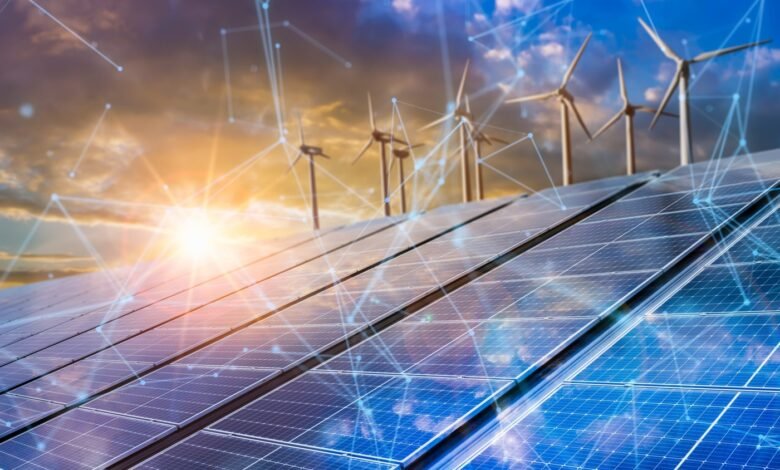
Technology innovation has been rapidly transforming the energy sector for many years, and 2023 is no exception. As we move towards a more sustainable future, the development of new technologies has become increasingly important. In this article, we will discuss the top technologies that are transforming the energy industry in 2023.
Top 7 Technologies Transforming Energy In 2023

Renewable Energy
Renewable energy has been on the rise for years, and in 2023, it is expected to continue to grow. One of the most popular forms of renewable energy is solar power. Solar panels have become increasingly efficient and cost-effective in recent years, making them a more attractive option for consumers and businesses. In addition, advancements in energy storage technology have made it possible for solar power to be used even when the sun is not shining.
Wind power is another form of renewable energy that is becoming more popular. Advances in wind turbine technology have made it possible to generate more power from each turbine, reducing the number of turbines needed to generate a given amount of energy. In addition, offshore wind farms are becoming more common, as they can generate more power than onshore wind farms.
Geothermal energy is a third form of renewable energy that is gaining popularity. This type of energy uses the natural heat of the earth to generate electricity. Geothermal power plants are typically located in areas where there is a high concentration of geothermal activity, such as geysers or hot springs.
Hydropower is another form of renewable energy that has been around for many years. This type of energy uses the power of moving water to generate electricity. Hydropower plants can be built in a variety of locations, including dams, rivers, and oceans.
Energy Storage
As renewable energy becomes more popular, energy storage solutions are becoming increasingly important. Energy storage allows excess energy to be stored when it is generated and used when it is needed. One of the most popular forms of energy storage is lithium-ion batteries. These batteries are widely used in consumer electronics and electric vehicles, and they are becoming more popular for energy storage as well.
Flow batteries are another form of energy storage that is gaining popularity. These batteries use two different electrolyte solutions that are pumped through a membrane to generate electricity. Solid-state batteries are also becoming more popular. These batteries use a solid electrolyte instead of a liquid one, which makes them safer and more efficient.
Hydrogen fuel cells are another form of energy storage that is gaining popularity. These cells generate electricity by combining hydrogen and oxygen, and they can be used to power a variety of devices, including cars and buildings.
Smart Grid
The smart grid is an intelligent power infrastructure that allows for two-way communication between electricity suppliers and consumers. This communication allows for more efficient and reliable power delivery. One of the key components of the smart grid is advanced metering infrastructure (AMI). AMI allows for real-time monitoring of energy usage, which can help consumers to better manage their energy consumption.
Distribution automation is another component of the smart grid that is becoming more popular. This technology uses sensors and other devices to monitor the power grid and automatically respond to changes in demand or supply. Demand response is another important component of the smart grid. This technology allows electricity suppliers to adjust their production in response to changes in demand.
Energy management systems (EMS) are becoming more popular as well. These systems allow consumers and businesses to monitor and control their energy usage in real time, helping to reduce waste and save money.
Carbon Capture
Carbon capture technology is designed to capture carbon dioxide emissions from industrial processes and store them underground. This technology is becoming increasingly important as the world seeks to reduce greenhouse gas emissions and address climate change. There are several different types of carbon capture technology, including post-combustion capture, pre-combustion capture, oxyfuel combustion capture, and direct air capture.
Artificial Intelligence (AI)
Artificial intelligence is becoming increasingly important in the energy sector. One of the key applications of AI is predictive maintenance. By analyzing data from sensors and other devices, AI can predict when equipment is likely to fail and schedule maintenance before it becomes a problem. This can help to reduce downtime and improve the efficiency of energy production.
Another application of AI is in energy trading. AI algorithms can analyze market data and make predictions about future energy prices, helping energy traders to make better decisions. In addition, AI can be used to optimize energy production by predicting energy demand and adjusting production accordingly.
Blockchain
Blockchain technology is becoming increasingly important in the energy sector as well. One of the key applications of blockchain is in peer-to-peer energy trading. This technology allows individuals and businesses to buy and sell energy directly with each other, without the need for intermediaries. In addition, blockchain can be used to track the origin of energy, making it easier for consumers to know where their energy is coming from and whether it is from renewable sources.
Internet of Things (IoT)
IoT is the interconnectivity of physical devices, vehicles, buildings, and other objects that are embedded with sensors, software, and network connectivity. This section will discuss some of the top IoT technologies that are transforming the energy sector, including:
- Smart Thermostats
- Smart Lighting
- Building Automation
- Electric Vehicle Charging
Important FAQs
- What is renewable energy? Renewable energy is energy that comes from sources that are replenished naturally, such as solar power, wind power, geothermal energy, and hydropower.
- What is energy storage? Energy storage allows excess energy to be stored when it is generated and used when it is needed, helping to ensure a more reliable and efficient energy system.
- What is the smart grid? The smart grid is an intelligent power infrastructure that allows for two-way communication between electricity suppliers and consumers, allowing for more efficient and reliable power delivery.
- What is carbon capture technology? Carbon capture technology is designed to capture carbon dioxide emissions from industrial processes and store them underground, helping to reduce greenhouse gas emissions and address climate change.
- What is blockchain technology? Blockchain technology is a decentralized digital ledger that allows for secure and transparent peer-to-peer transactions, making it a powerful tool for energy trading and tracking the origin of energy.
Conclusion
In conclusion, the energy industry is undergoing a significant transformation as new technologies are being developed and deployed. From renewable energy to carbon capture and AI, the energy sector is becoming more efficient, sustainable, and cost-effective. The adoption of these technologies will help to reduce greenhouse gas emissions and address the climate crisis.
Read More: 11 Cutting Edge Technologies That May Soon Be Making A Big Impact 2023








3 Comments